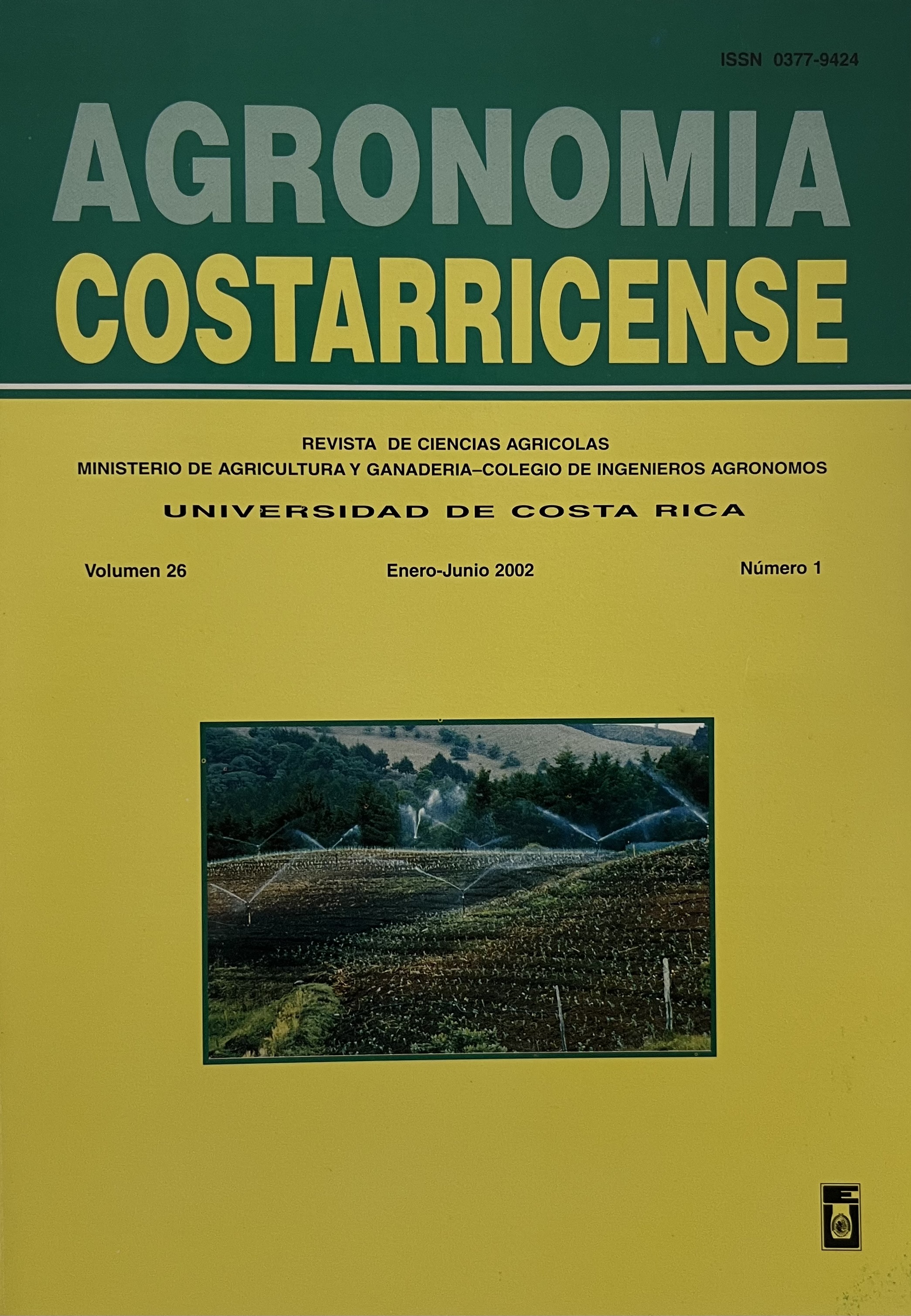Abstract
In Turrialba, Costa Rica solar radiation (Rs) is bimodal during the year and it influences the mean ambient and soil temperatures. This variation is influenced by the dates 16 of April and 26 of August which correspond to periods when solar rays al midday are perpendicular to earth´s surface and provide maximum intensity at this latitude (9.88o N). On the other hand, the 21st of June, the longest day of the year, has very little effect because the variation of day length is very small. The same tendency is observed in the rest of Costa Rica. The bimodal peaks can be suppressed or displaced by rain and cloudiness. Thepeaks of average monthly radiation are followed one month later by peaks of average monthly ambient temperature, which are culminations of periods of accumulative heating due to energy received during diurnal radiation being greater than the lost during nocturnal cooling, until such culmination is reached. After the culmination, a period of accumulative cooling follows. The peak of monthly ambient temperature coincide with the peaks of monthly soil temperature up to 30 cm depth. At depths greater than 10 cm, the mean annual soil temperature varies very little with depth thus following the model explained by Montieth and Soil Taxonomy. On the other hand, between 0 and 10 cm, the annual means are found in a central position with respect to the monthly means and they show a tendency to increase towards the surface. The temperature at 10 cm shows a minimum value suggesting a heat sink at that depth. This is explained by a heavy rain during the night and its accompanying cloudiness the following day, which cooled the soil to 20 cm depth, and subsequently the 0-10 cm section was reheated and this resulted in a tendency of minimum at 10 cm depth seen in the monthly values. This demonstrates a cooling in the subsoil by the advection of cold water by the penetration of rain water. The average annual soil temperature at 50 cm depth (T50) in Turrialba is 25.4oC and the fluctuation o the monthly average is 1.9oC, and as a result, the temperature regime of the soil taxonomy system of the U.S.A is isohyperthermic. The annual average at 50 cm depth (T50) less the annual ambient average, Ta, is 3.80oC. Values for other parts of Costa Rica vary between 2.2oC and 3.9oC and they are similar to values found in Venezuela (2-12oN). On the other hand, the value is 1oC for the majority of the U.S.A. Plants in the field grow under fluctuating ambient temperatures and not in constant temperatures as occur in controlled experiments. The observations of Trojer in Colombia have made an important contribution about the critical temperatures for crops in the tropical zone, the identification of the climatic equator at 5oN (where there is a displacement of the dry season by 6 months). The observations of Trojer about a transition zone of whathe calls the climatic equator in Colombia indicate that in going between 8oN and 4oN, the year with a dry season in January March changes to one with 2 dry seasons in January-March and August-October and then to one with a dry season in August October. This belt has very little variations of the mean monthly ambient temperature. Data obtained by Forsythe confirm the same tendencies in the coastal planes of Guyana.
##plugins.facebook.comentarios##

This work is licensed under a Creative Commons Attribution-NonCommercial-NoDerivatives 4.0 International License.
Copyright (c) 2025 Agronomía Costarricense


